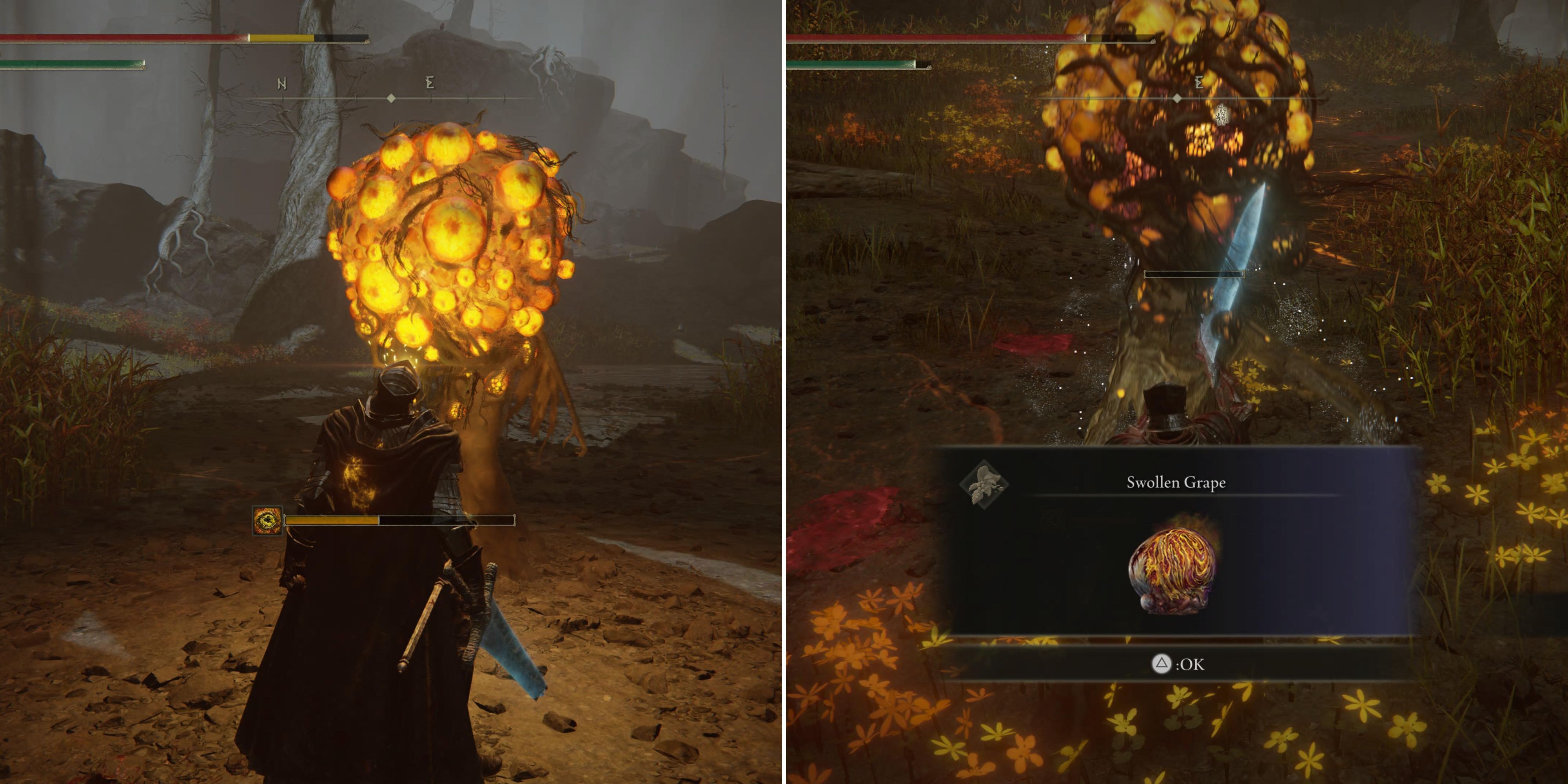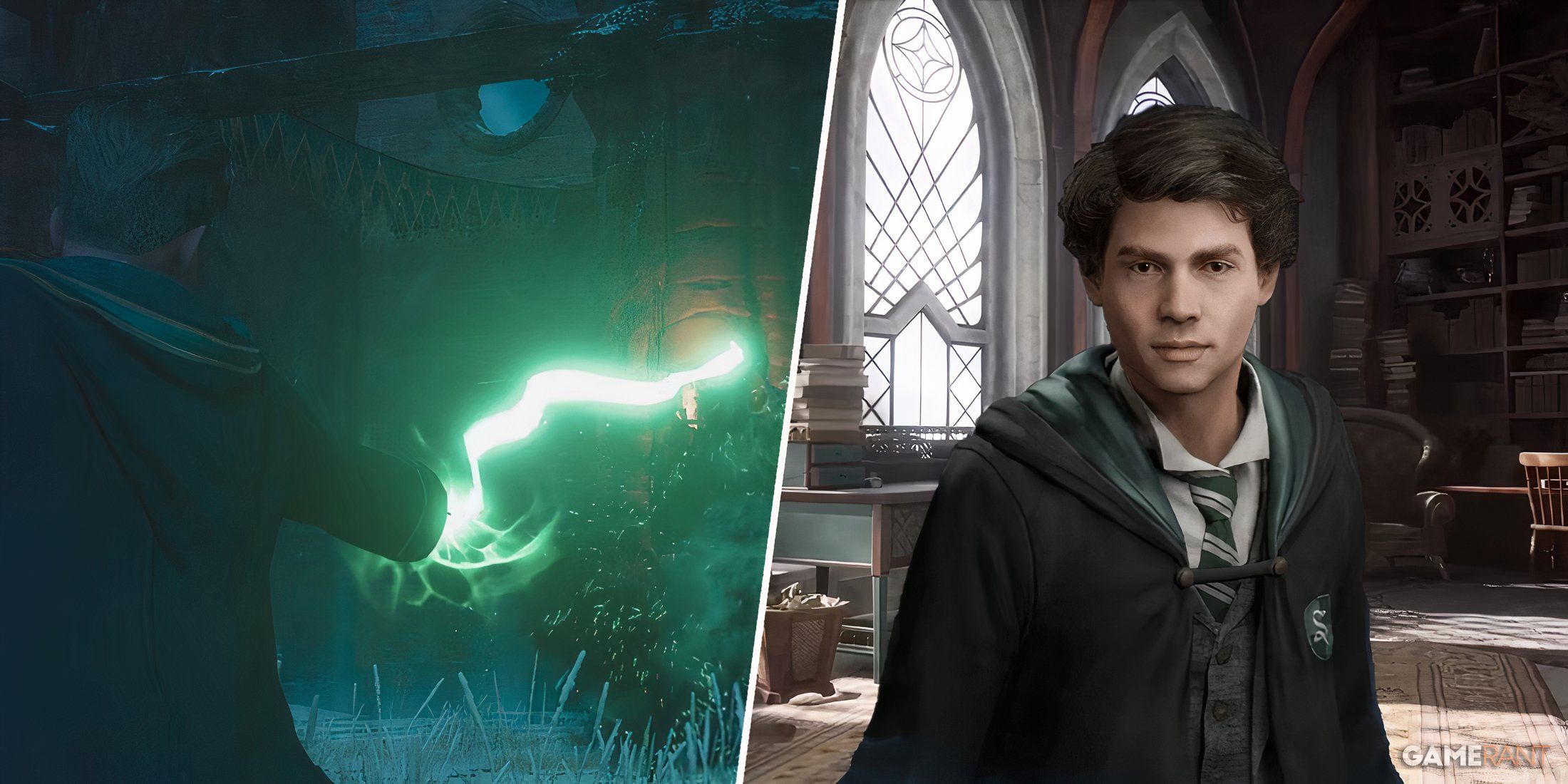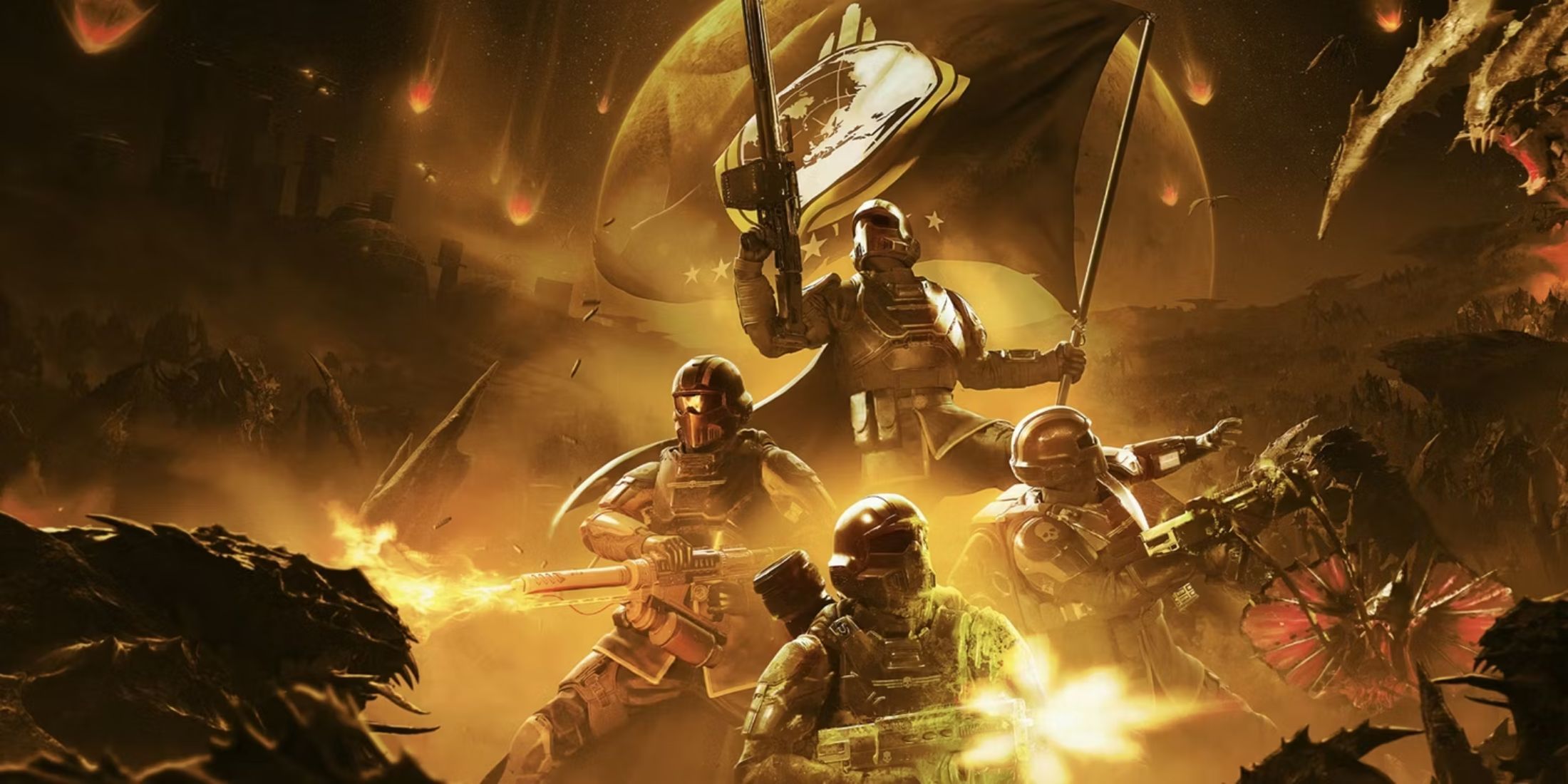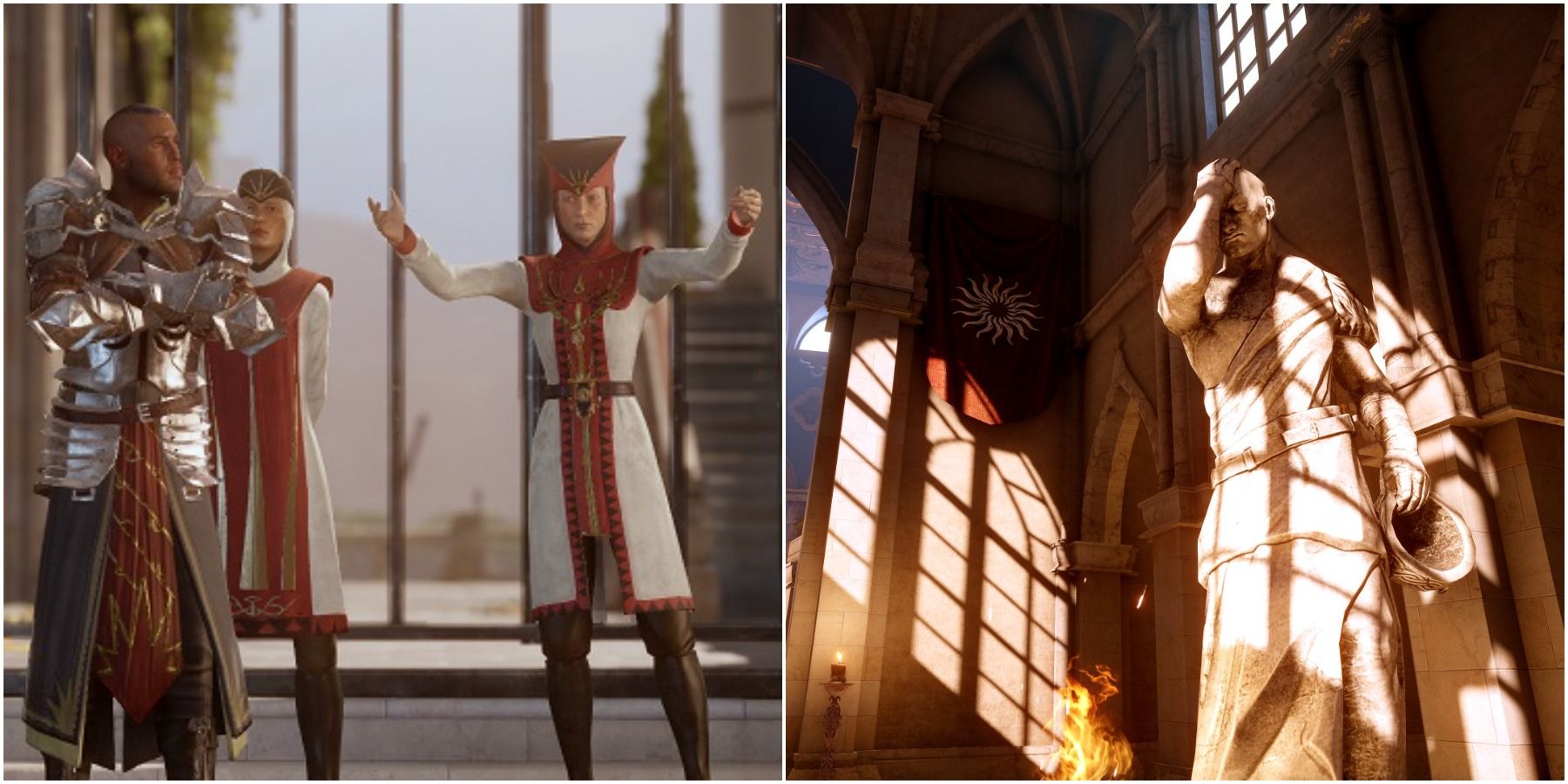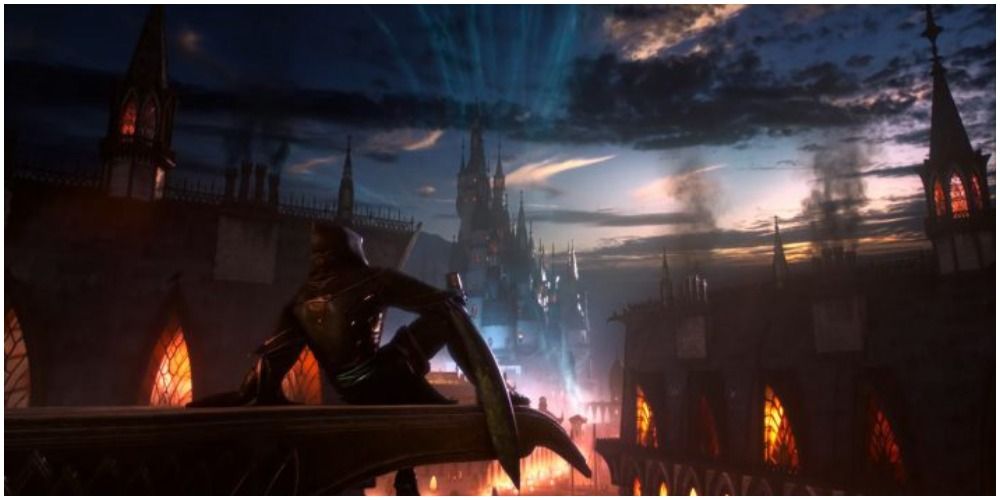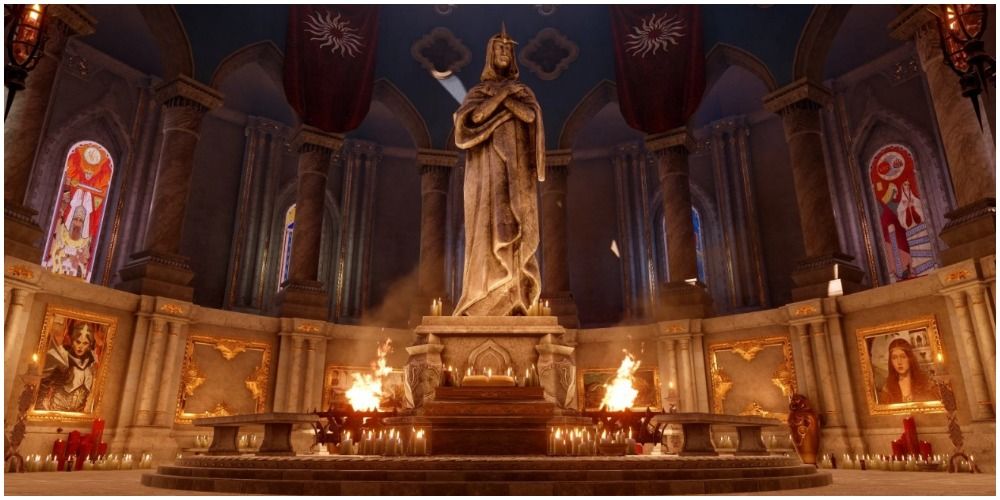Dragon Age 4 is taking players to Tevinter, a location known well for its oppressive systems of power overseen by powerful mages. Despite not going to Tevinter in previous games, dedicated fans already know a lot about this nation, its history, culture, and even some of its characters. One aspect of the nation that fans are prepared to learn more about is its Chantry, also known as the Imperial Chantry.
The Imperial Chantry is fascinating, as it takes Andrastianism and changes it for the nation's values. Not only that, but the plot of Dragon Age 4 may also challenge Chantry teachings, as more may be learned by what Coryhpeus meant when the Maker's seat was empty (especially considering Solas plans to tear down the Veil). In all likelihood, Dragon Age fans are going to get a very different perspective of the Chantry overall in Dragon Age 4.
What Is Known Of The Imperial Chantry
While way more is likely to be learned in Dragon Age 4, there is still a decent amount known about the Imperial Chantry through the Dragon Age books and in-game codices. It is mentioned in the "Chantry Hierarchy" codex that the very heart of the Imperial Chantry is located in Minrathous in the Argent Spire. It is there that the Imperial Divine resides. With Minrathous being Tevinter's capital city, players may even get to see and/or visit the Argent Spire in Dragon Age 4.
The Imperial Divine is known as the Black Divine to other nations, and unlike the Orlesian Chantry, he is always male. Within Tevinter, though, he is not called the Black Divine but the true one. Priesthood is open to men in Tevinter, while men cannot climb much of the Chantry ladder in Orlais and women cannot climb much of it in Tevinter. The Imperial Chantry also believes magic should rule over man, which is in opposition to the Orlesian Chant of "magic must serve man, and not rule over him." A lot of bad blood has happened between the two Chantries, with the Imperial Chantry making the death of Divine Joyous II a holiday and Divine Beatrix I calling the next age the Black Age (after the Black Divine) as just two examples.
Another great divide between the Imperial and Orlesian Chantry is in their beliefs about Andraste. The Orlesian Chantry believes that she was divine and ascended to the Maker's side has his bride, while it is believed in Tevinter that she was merely human with magical talents. Some Dragon Age fans actually believe more in the Tevinter version of Andraste, with a popular theory being that Andraste is like Kieran in that she harbored the soul of an Old God. The Imperial Chantry has forbidden worship of Andraste, and solely worships the Maker. They also believe that blood magic was taught by elves of Elvhenan rather than by the Old Gods.
One commonality the Imperial and Orlesian Chantry have in common is that the Divine is elected by grand clerics. The difference within the election is that the Imperial Divine wins by a majority and the Orlesian Divine is picked through unanimous votes. Imperial Divines are also always magisters that have a seat in the Magisterium. It is hinted that a lot of worship includes magic.
Other Pieces That Contradict The Orlesian Chantry
While there will be a lot of new Chantry perspectives in Tevinter itself, there are Chantry-related questions floating around in the Dragon Age universe that may be answered or at least touched upon in the plot of Dragon Age 4. There is a mountain of theories surrounding Darkspawn, Andraste, and the Maker, and they may get proven or disproven.
Corpyheus himself has mentioned a detail that fans have not forgotten. He went to the Golden City to meet the Maker, but found his throne empty. It's doubtful Corypheus was lying, and if Solas succeeds at tearing the Veil down, players may actually get to see what Corypheus saw. Revealing what once was the Golden City would be major for the Chantry. It could prove and/or disprove information the religion staked lives on for so long.
Additionally, more will likely be revealed about the Darkspawn. The Orlesian Chantry teaches that the Maker created Darkspawn from magisters as punishment for them breaking into the Golden City. If the Veil is torn down, evidence could actually be collected whether what the Orlesian Chantry was correct or not. Corypheus does seem to be a magister turned Darkspawn, but there is a possibility that he was created by something that was not the Maker.
Along with Darkspawn, more would be unveiled about the Old Gods. These beings that were said to be dragons were worshipped in Tevinter until the Imperial Chantry happened. It's believed the Old Gods were the ones that convinced the magisters to break into the Golden City. It does make some sense, as Corypheus was the high priest of the Old God Dumat. However, fans wonder why the Old Gods told mankind to break into the Golden City in the first place, because the Chantry only teaches that the Old Gods were jealous of the Maker.
A popular theory that fits into what may happen in Dragon Age 4 is that the Old Gods are connected to the Evanuris, the pantheon of elves that Solas sealed beyond the Veil. It's possible they whispered into the ears of the magisters to trick them into worshipping and freeing them, but something went wrong. This would actually prove both the Imperial and Orlesian Chantry right about where blood magic was learned, despite it seeming that they believe different versions. It is a theory that is popular because there are seven Old Gods and (outside of Fen'Harel and Mythal) there are seven Evanuris sealed away.
Dragon Age 4 is in development.

